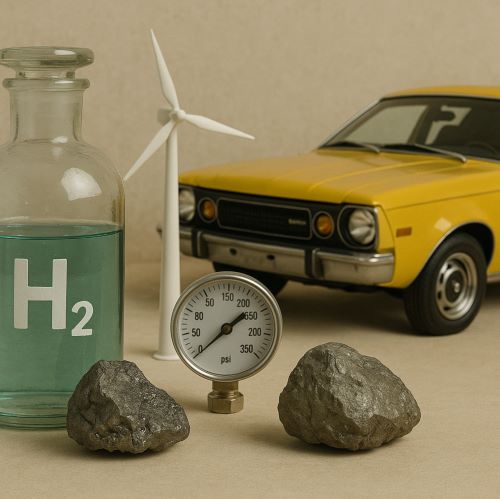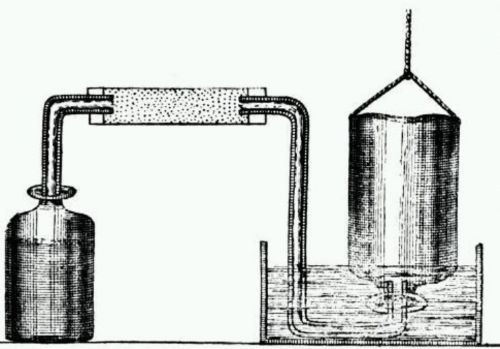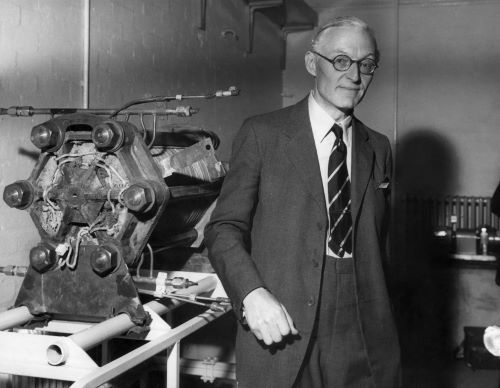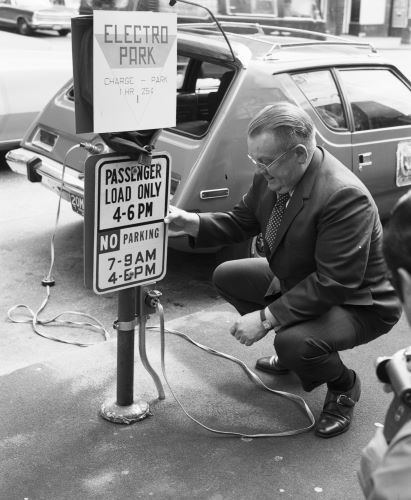

The history of green hydrogen is not a history of triumph but of recurrence. It returns with every crisis, every oil shock, every moment when fossil certainty falters.

By Matthew A. McIntosh
Public Historian
Brewminate
Introduction: A Flame Without Smoke, a Dream Without Carbon
In the modern age of climate anxiety and decarbonization imperatives, hydrogen, especially in its so-called “green” form, has reemerged as a beacon of clean energy potential. Yet this twenty-first century enthusiasm obscures a deeper and stranger genealogy. Long before hydrogen was labeled “green,” and long before it was marketed as the clean fuel of the future, it flickered in laboratory glassware and sputtered in modified engines, alternately viewed as a scientific curiosity, a wartime necessity, and a speculative techno-utopia. Its earliest documentable moment in energy history, curiously poetic in hindsight, came in 1766, when Henry Cavendish identified a colorless, flammable gas released from metals in acid and called it “inflammable air.”1 It was, he would later observe, the lightest substance known and highly combustible.
From that quiet origin in Enlightenment empiricism to the moment a modified American Motors Gremlin rolled across a California tarmac in 1972, powered by a hydrogen fuel cell, lies a story not of linear innovation but of recurring visions, dashed hopes, and the stubborn allure of an elemental promise. Hydrogen, always elusive and volatile, became a kind of mirror in which successive generations projected their aspirations for a post-carbon world—sometimes before such a world had even taken shape in imagination.
This essay traces that arc, examining how hydrogen evolved from Cavendish’s gas to a techno-cultural experiment during the oil-soaked twentieth century. It considers the tensions between scientific discovery, technological application, and political economy, and shows how hydrogen’s energy potential, particularly in its green form, has long existed in the margins of feasibility and fantasy.
Cavendish and the Age of Elements: Discovery and Meaning
Inflammable Air and Enlightenment Experimentation

Henry Cavendish’s 1766 publication, Three Papers Containing Experiments on Factitious Air, announced the first recorded isolation of hydrogen, which he produced by reacting zinc with dilute sulfuric acid.2 Cavendish, precise and methodical, did not name the gas hydrogen; that honor would fall to Antoine Lavoisier, who later coined the term from the Greek for “water-former.”3 But Cavendish’s contribution was foundational. He not only identified the gas’s combustibility and lightness, but, more significantly, he recognized that it produced water upon burning, a reversal of then-dominant phlogiston theories and a quiet step toward the new chemistry of the late eighteenth century.
The implications of this “inflammable air” as an energy source were not immediately pursued. In Cavendish’s hands, hydrogen was a property to be catalogued, not yet a tool to be harnessed. But the seeds of possibility had been planted. Hydrogen’s unique combination of lightness and power, its ability to lift balloons and explode with a spark, placed it at the crossroads of curiosity and danger.
From Philosophy to Utility
Within decades, hydrogen found application in ballooning and illumination. Its combustion offered clean, bright light, and its buoyancy enabled early flight experiments. Yet even in these limited uses, the challenges of storage, production, and volatility remained formidable. Hydrogen was an energy carrier without infrastructure, and while its properties fascinated chemists and inventors, it remained largely impractical for mass application throughout the nineteenth century.
Still, the symbolism of hydrogen grew. It became an element associated with scientific modernity, a gaseous emblem of Enlightenment control over nature. Its synthesis of volatility and elegance offered a metaphor for the new chemistry, even as its real energy applications remained embryonic.
From Theory to Application: Hydrogen in the Industrial Imagination
The Early Twentieth Century: From Fuel to Weapon

The rise of industrial chemistry and modern warfare recontextualized hydrogen. During World War I and II, hydrogen was produced on an industrial scale, primarily through steam reforming and electrolysis, for use in ammonia synthesis, weather balloons, and later as a component in bomb detonation.4 But energy use remained rare. Fossil fuels were cheap, dense, and supported by robust infrastructure. Hydrogen, by contrast, was unwieldy and expensive.
Still, some visionaries looked ahead. Jules Verne, in his 1874 novel The Mysterious Island, imagined a future in which “water will one day be employed as fuel, that hydrogen and oxygen…will furnish an inexhaustible source of heat and light.”5 Verne’s speculative fiction would be echoed decades later by engineers and technocrats who saw in hydrogen a post-coal, post-oil utopia. These dreams gained new urgency as the twentieth century progressed.
By the mid-century, fuel cell technology emerged as a plausible mechanism for hydrogen energy. Developed initially by Francis Thomas Bacon in Britain, and later adapted for use in NASA space missions, the hydrogen fuel cell offered a way to convert chemical energy into electricity without combustion.6 On paper, the efficiency and cleanliness were remarkable. In practice, it remained expensive and delicate. But spaceflight proved a powerful incubator for innovation and mythology.
The Hydrogen Economy and Cold War Technofutures
The postwar period, especially during the oil crises of the 1970s, witnessed growing interest in alternative energy systems. Hydrogen became central to discussions of a new “hydrogen economy,” in which renewable electricity would be used to electrolyze water, producing hydrogen for storage and eventual use in transportation and power generation.7 These ideas were often pitched as blueprints for planetary salvation, technocratic visions that combined ecological sustainability with geopolitical autonomy.
Yet these visions struggled to gain traction. Fossil fuel interests remained politically dominant, and hydrogen’s practical barriers (storage, transport, and cost) remained unresolved. Still, the discourse intensified, and hydrogen reentered public awareness as both a real energy option and a symbol of ecological futurism.
The Gremlin’s Brief Flicker: Hydrogen Meets the Highway
1972: The Gremlin Goes Green

The culmination of early hydrogen dreams in the context of automotive transportation arrived unexpectedly in 1972, when engineers at the University of California, Los Angeles, retrofitted an AMC Gremlin to run on hydrogen using a fuel cell system. Sponsored in part by the U.S. Department of Transportation, the project aimed to demonstrate the feasibility of zero-emission vehicles using domestically produced hydrogen.8 The car was an unlikely vessel—a compact, slightly awkward consumer model associated more with frugality than innovation.
Still, the hydrogen-powered Gremlin functioned, albeit with limitations. Its range was short, its refueling cumbersome, and its storage tanks bulky. But it worked. It translated an Enlightenment gas into automotive propulsion. For a moment, hydrogen energy touched asphalt.
Public reception was muted. Oil was still cheap, and the OPEC embargo that would launch hydrogen into policy debates was a year away. The Gremlin became an obscure footnote, eclipsed by the more dominant narrative of electric vehicles, and eventually forgotten amid the Reagan-era return to fossil fuel orthodoxy.
Limits and Legacies
The hydrogen Gremlin revealed both the promise and precarity of hydrogen energy. Technologically feasible, conceptually elegant, yet economically unviable, it became emblematic of hydrogen’s larger status in energy history. Always almost there, always just over the horizon. Its failure was not a technological collapse but a sociopolitical retreat.
Still, the Gremlin mattered. It linked Cavendish’s eighteenth-century gas to a twentieth-century machine. It showed that hydrogen’s challenge was never purely scientific. It was infrastructural, political, and cultural. The Gremlin was a prototype not of technology but of aspiration.
Conclusion: Green Dreams and Elemental Continuity
The history of green hydrogen is not a history of triumph but of recurrence. It returns with every crisis, every oil shock, every moment when fossil certainty falters. From Cavendish’s glassware to a California test track, hydrogen has flickered at the edges of the energy imagination: clean, potent, and perpetually just out of reach.
Its long arc reveals more than the evolution of a fuel. It reveals the persistence of a dream: that energy might be drawn not from combustion, but from transformation; not from scarcity, but from abundance. That the simplest element (two protons, two electrons) might power a civilization not yet prepared to understand the nature of its own dependence.
As the twenty-first century looks again to green hydrogen, it would do well to remember not just the science, but the past. The flame Cavendish lit still burns, however faintly.
Appendix
Footnotes
- Henry Cavendish, “Three Papers Containing Experiments on Factitious Air,” Philosophical Transactions of the Royal Society of London 56 (1766): 141–184.
- Ibid., 145.
- Antoine Lavoisier, Elements of Chemistry, trans. Robert Kerr (Edinburgh: William Creech, 1790), 91–92.
- Vaclav Smil, Energy and Civilization: A History (Cambridge: MIT Press, 2017), 313–317.
- Jules Verne, The Mysterious Island, trans. William Henry Giles Kingston (London: Sampson Low, 1875), 498.
- Calvin Hennick, “Making Hydrogen Power a Reality,” MIT News (June 27, 2022), https://news.mit.edu/2022/making-hydrogen-power-reality-0627.
- Joan Ogden and Robert H. Williams, Solar Hydrogen: Moving beyond Fossil Fuels (New York: World Resources Institute, 1989), 89-92.
- U.S. Department of Transportation, Hydrogen Fuel Cell Vehicle Program Report (Washington, D.C.: 1973), 6–8.
Bibliography
- Cavendish, Henry. “Three Papers Containing Experiments on Factitious Air.” Philosophical Transactions of the Royal Society of London 56 (1766): 141–184.
- Lavoisier, Antoine. Elements of Chemistry. Translated by Robert Kerr. Edinburgh: William Creech, 1790.
- Ogden, Joan, and Robert H. Williams. Solar Hydrogen: Moving beyond Fossil Fuels. New York: World Resources Institute, 1989.
- Smil, Vaclav. Energy and Civilization: A History. Cambridge: MIT Press, 2017.
- U.S. Department of Transportation. Hydrogen Fuel Cell Vehicle Program Report. Washington, D.C.: 1973.
- Verne, Jules. The Mysterious Island. Translated by William Henry Giles Kingston. London: Sampson Low, 1875.
- Calvin Hennick. “Making Hydrogen Power a Reality.” MIT News (June 27, 2022), https://news.mit.edu/2022/making-hydrogen-power-reality-0627.
Originally published by Brewminate, 08.08.2025, under the terms of a Creative Commons Attribution-NonCommercial-NoDerivatives 4.0 International license.


